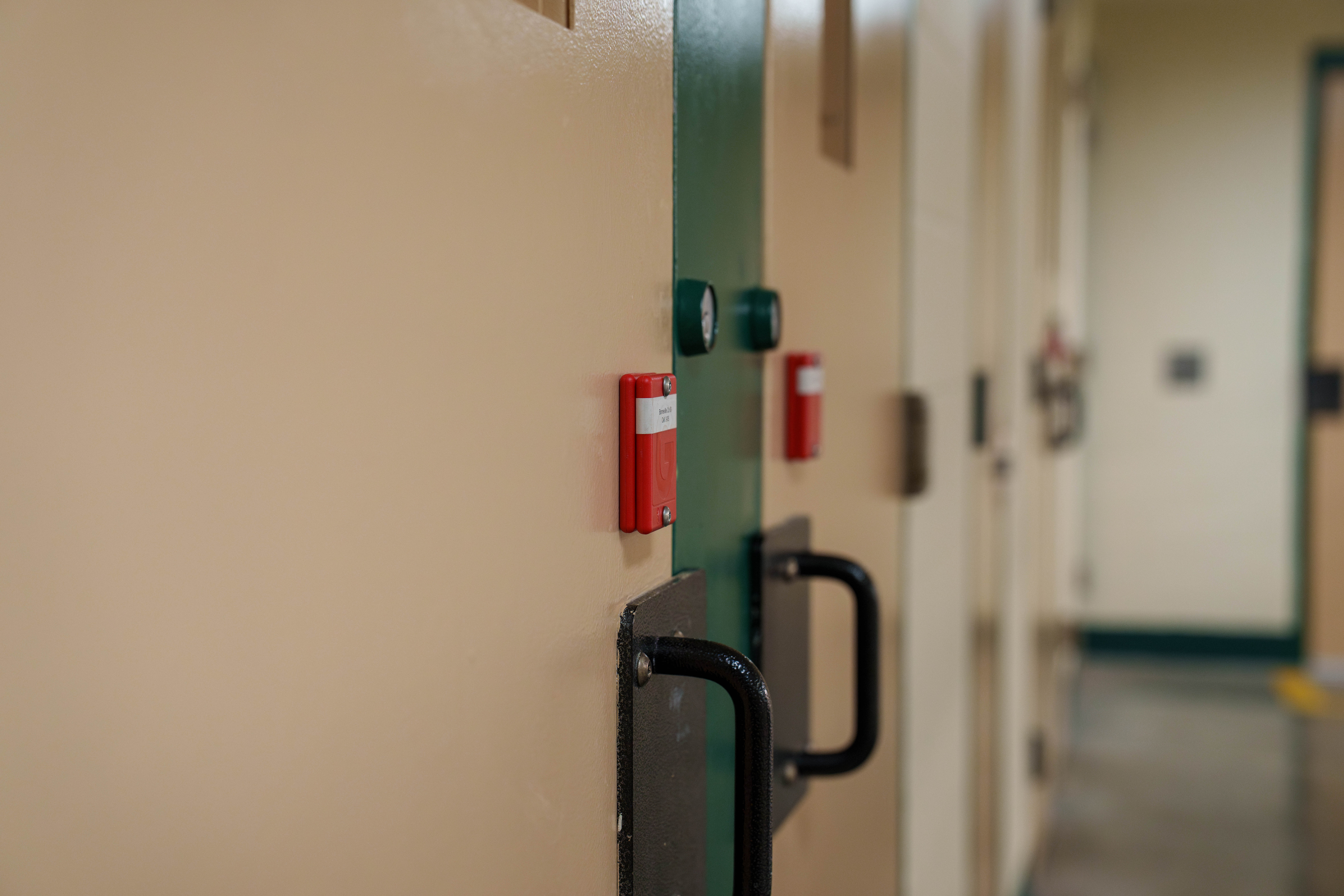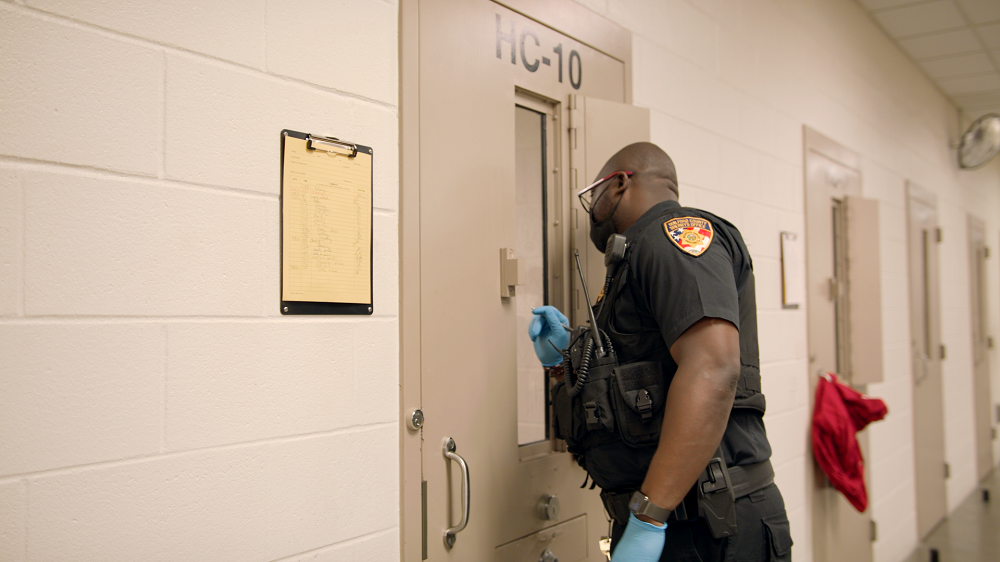You're exploring different mobile inmate tracking systems, and it seems like QR codes and RFID tags serve similar purposes, right? Both are contactless, can identify what you're scanning, are relatively inexpensive, and have comparable read distances. So, how are they different?
In this blog, we’ll break down the key differences between QR codes and RFID tags. And if you’re wondering, “How can this blog be objective when RFID is literally in your company name?” Well, don't worry — we'll cover the downsides of RFID tags as well.
What is a QR Code?
A QR code, which stands for Quick Response code, is a type of two-dimensional (2D) barcode that can store information such as URLs, text, contact information, or other data. Unlike traditional barcodes, which store data in only one direction (horizontally), QR codes can store information in both horizontal and vertical directions, allowing them to hold much more data.
Most modern smartphones and mobile devices come with built-in camera apps that can automatically recognize and read QR codes. In corrections, QR codes are most often seen when used to represent specific locations, such as pods or cells. The codes are scanned to log proof of officer presence during security rounds or cell checks.
What’s a Passive RFID Tag?
A passive RFID tag (Radio Frequency Identification tag) is a small electronic device that uses radio waves to transmit data but doesn't have its own power source. Instead, it relies on the energy emitted by an RFID reader to power up and transmit the information stored in the tag.
There are three types of passive RFID tags:
- Low-frequency (LF)
- High-frequency (HF)
- Ultra-high frequency (UHF)
Since its inception, GUARDIAN RFID has supported the use of high-frequency RFID tags. HF RFID operates at 13.56 MHz, offering a moderate range (up to 3 feet) and faster data transfer speeds.
Are Passive RFID Tags and NFC the Same?
High-frequency (HF) RFID tags and Near Field Communication (NFC) are both based on the same underlying technology, but they are used in slightly different contexts and have some key differences in terms of range, compatibility, and application.
Some similarities between the two include:
- Operating frequency: Both HF RFID and NFC operate at the same frequency of 13.56 MHz.
- Passive tags: Both technologies support passive tags, meaning they don’t require a battery. Instead, they rely on energy from the reader or device to communicate.
- RFID technology: NFC is essentially a subset of RFID technology. All NFC operates based on HF RFID principles, but not all HF RFID systems are NFC.
While they share common foundations, there are key differences:
- NFC is designed for short-range, secure interactions that require close proximity and typically two-way communication. For example, NFC is used in applications like mobile payments or sharing information between devices.
- HF RFID is better suited for applications such as inventory management or asset tracking, where tags are often read from a greater distance and typically require one-way communication between the tag and the reader.
In short, both technologies are based on similar principles of radio frequency communication, but their use cases and communication requirements differ. While NFC is optimized for consumer-facing interactions, HF RFID is primarily used in industrial and commercial applications.
How are QR Codes Vulnerable?
QR codes are simple to recreate, which is one of the reasons they can be vulnerable to malicious use. Since generating a QR code doesn’t require specialized tools or expertise, anyone can easily create and distribute fraudulent QR codes. Below is an overview of how effortlessly QR codes can be replicated and the potential risks involved.
How Easy Is It to Create a QR Code?
Creating a QR code is a simple process, and there are many free online tools that make it accessible to everyone. This is usually done using a QR code generator, where you can input data (such as a cell assignment or location) and instantly generate a QR code. These tools require no programming or technical skills. Most popular QR code generator websites are simply found on Google, including:
- QR Code Generator (https://www.qr-code-generator.com/)
- QRStuff (https://www.qrstuff.com/)
- GoQR (https://goqr.me/)
Once a QR code is created, it can be printed, shared, or digitally distributed. Think it hasn't happened? It already has and on multiple occasions. One of the earliest examples occurred in the LA County jail system, where L.A. County Sheriff's deputies thwarted a barcode system to avoid conducting jail rounds.
QR Codes are Easy to Damage or Deface
Damaging a QR code can be done in several ways, but the degree to which it remains scannable depends on the extent of the damage. QR codes have built-in error correction, which allows them to be scanned even if part of the code is altered or missing.
However, if the damage surpasses the error correction capacity, the QR code may become unreadable. Inmates, for example, could use a marker or pen to obscure part of the code, potentially rendering it unusable.
What’s the Downside to RFID tags?
The main downside of passive RFID tags is their short read range. Since they lack a battery and rely solely on power from the reader (e.g., SPARTAN), they can only be read from close proximity. Additionally, passive RFID tags have limited data storage capacity and are unsuitable for applications requiring real-time tracking, as they depend on the reader to activate them.
- For example, Hard Tags only function within a limited range of the reader, making them ineffective for long-range tracking applications. However, it’s important to note that HF RFID tags were specifically chosen 20 years ago to provide a correctional officer’s proof of presence and allow them to visually observe an inmate from a cell window or door.
- Hard tags can also be affected by environmental factors, such as metal, which may interfere with the signal. To mitigate this, some jails and prisons use spacer tags designed to lift the hard tag off the surface of metal door frames or walls.
Does Command Cloud Support the Use of QR Codes or Barcodes?
Command Cloud does not utilize QR codes or barcodes within any of its native applications, as these can be susceptible to damage or falsification.
However, Command Cloud does support the printing of CODE128 and CODE39 barcodes on RFID wristbands and RFID cards, otherwise known as Hard Tags. This functionality ensures compatibility with third-party systems, such as commissary and electronic medical record systems, allowing seamless auto-identification across the platforms you already use.
Ultimately, choosing between these technologies depends on your correctional facility’s operational priorities—whether it’s the simplicity and affordability of QR codes or the reliability and controlled access of RFID. By understanding the strengths and limitations of each, you can make an informed decision that aligns best with your inmate tracking requirements.


.jpg)
